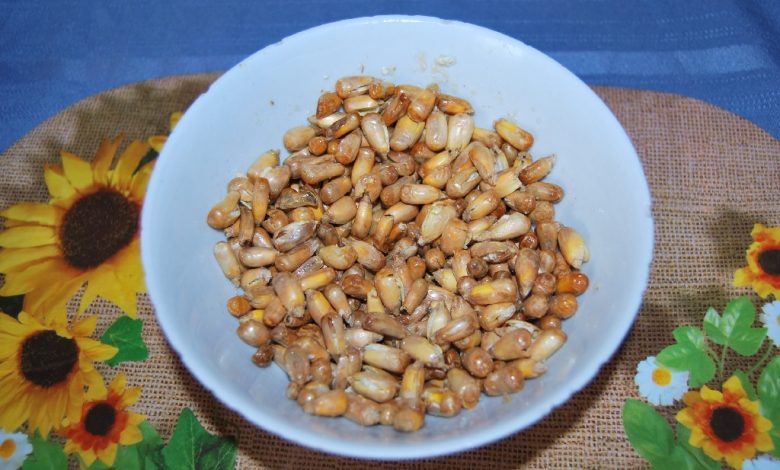Canchitas, Kernels of Continuity

So much has changed since the child of a noble, mother and a Spanish father, El Inca Garcilaso de la Vega wrote his Royal Commentaries of the Incas and General History of Peru, yet reading his work first published in 1609 when he was an old man, is to take one right to contemporary Cuzco. Sometimes it seems there have been no centuries since then and now, even though so much is radically different. Such is the case when reading about corn.
Garcilaso was born in 1539 in a Cuzco conquered and transformed but where the adults knew and remembered the Inca Empire. Even more importantly, many of the customs and much of the food was still the same. After his childhood in Cuzco and his adult lifetime in Spain, Garcilaso put pen to paper to document his Peru.
Of the fruits that grew above ground the most important was the grain the Mexicans and the inhabitants of the Windward Islands call maize and the Peruvians sara, for it is their bread.
Ok. There is wheat bread all over Cuzco and amazing bread at that. The Spanish successfully transplanted that food. Wheat bread is eaten in the morning with coffee, accompanies soup for lunch, and is eaten in the afternoon or evening as part of people’s lonche. Despite this, corn is also there to accompany other foods, as if it were bread.
Roasted sara is called camcha, “toasted maize,” a word that includes both the adjective and the noun: the m should be pronounced, for if the word were written with n, it would mean “ward, suburb or “large enclosure.”

Today the m has all but disappeared and the food is commonly called cancha or canchitas, even though the word cancha also means enclosure or even a football field.
Nevertheless cancha is eaten all the time. It is included in Cuzco’s iconic chiriuchu, and accompanies ceviche. It is sold in supermarkets, and on street corners. It comes with the toqto–crispy pork skin– that is one of Cuzco’s favorite snacks.

Made by applying heat to dried kernels of corn, sometimes with oil and sometimes without, cancha results in a crunch on the teeth followed by a puff of rich softness. Cancha is everywhere, as if Garcilaso were not the name of a major public school but of a young man still pursuing romance and glory in the streets of his mother’s city.
Although similar techniques with corn are found elsewhere, including the United States, In Cuzco they are not only good but symbolize the place and its history with every crunch and puff.
Called “parched corn” in English, the North American dish was important to its indigenous inhabitants and accompanied Anglo pioneers in their westward march and settlement. But it cannot easily be found today and school kids don’t much it to ward off hunger. It has largely disappeared.
Not so in Cuzco. Cancha remains. And, every traveller who lifts a kernel or two to their mouth is eating history and continuity. To Garcilaso, sitting as an elderly gentleman in Spain and writing about his and his family’s past it was a memory. But in Cuzco cancha still survives.
Here is a link from another site to a recipe for cancha.




